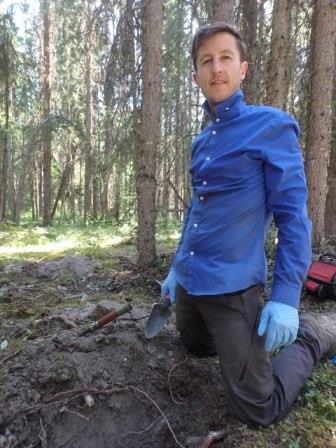Biography:
Shane started his undergraduate studies in Christchurch, New Zealand at the University of Canterbury following a drilling season assisting on an exploratory drilling rig in northern Canada. Christchurch in 2011 was a great location to be studying Geology; they had experienced some large earthquakes, and there was a lot of geological interest in the community. By 2013 he had ventured out into Europe, seeking new experiences and opportunities. He completed the final year of my undergraduate geology degree at the University of Copenhagen, Denmark. During this period, he came in contact with The Centre for Star and Planet Formation (Starplan), a research facility specializing in isotopic analysis at the Natural History Museum of Denmark.
He held a position as a laboratory assistant at the museum and wrote his bachelor thesis there (Lu-Hf isotope system). Following graduation, he continued at Starplan whilst applying to graduate geology programs internationally, eventually accepting an offer from The University of British Columbia (UBC) in Vancouver. At UBC he is also a representative to the Canadian Union of Public Employees, Chair of the Sustainability Committee at Green College and teaching assistant (TA) in the faculty of Earth, Ocean and Atmospheric Sciences.
Project: Geochemical Mapping of Porphyry Deposits and Associated Alteration through Transported Overburden
The project will identify geochemical anomalies in the surface environment by keeping the following key objective in mind; the complexities of the surface environment need to be integrated to fully understand it’s influence on both background responses in addition to the response from mineralization. A critically overlooked component in the interpretation of geochemical soil surveys is quantifying the history of the horizon to be sampled. Frequently geochemical responses are evaluated without due consideration to the geology of the material sampled at the selected horizon; the relative age of the land surface; and the geomorphological setting.
Anomaly generation is a time integrated process, hence understanding whether the surface material is being re-worked, either by natural processes or human intervention; being re-deposited; or in-situ following the final ice regression is essential to evaluating the level of expected response. Simple changes in organics and Fe-Mn-oxide contents as well as clay content and type can introduce considerable natural background variation, swamping the sought anomalous responses in the noise. As such integration of the surface geology, environment, relative age and composition are key components in anomaly identification and result interpretations.
The multi-element geochemistry will identify anomalous responses to mineralization over the Deerhorn porphyry through young glacial cover. Geophysics (self-potential survey) and hydrocarbon analyses will delineate the mineralization at depth. Identifying the habit of the anomalous response, and the process or processes leading to it’s surface expression will result in the construction of robust geochemical tools that can be applied to resource exploration in covered glacial terrains.
